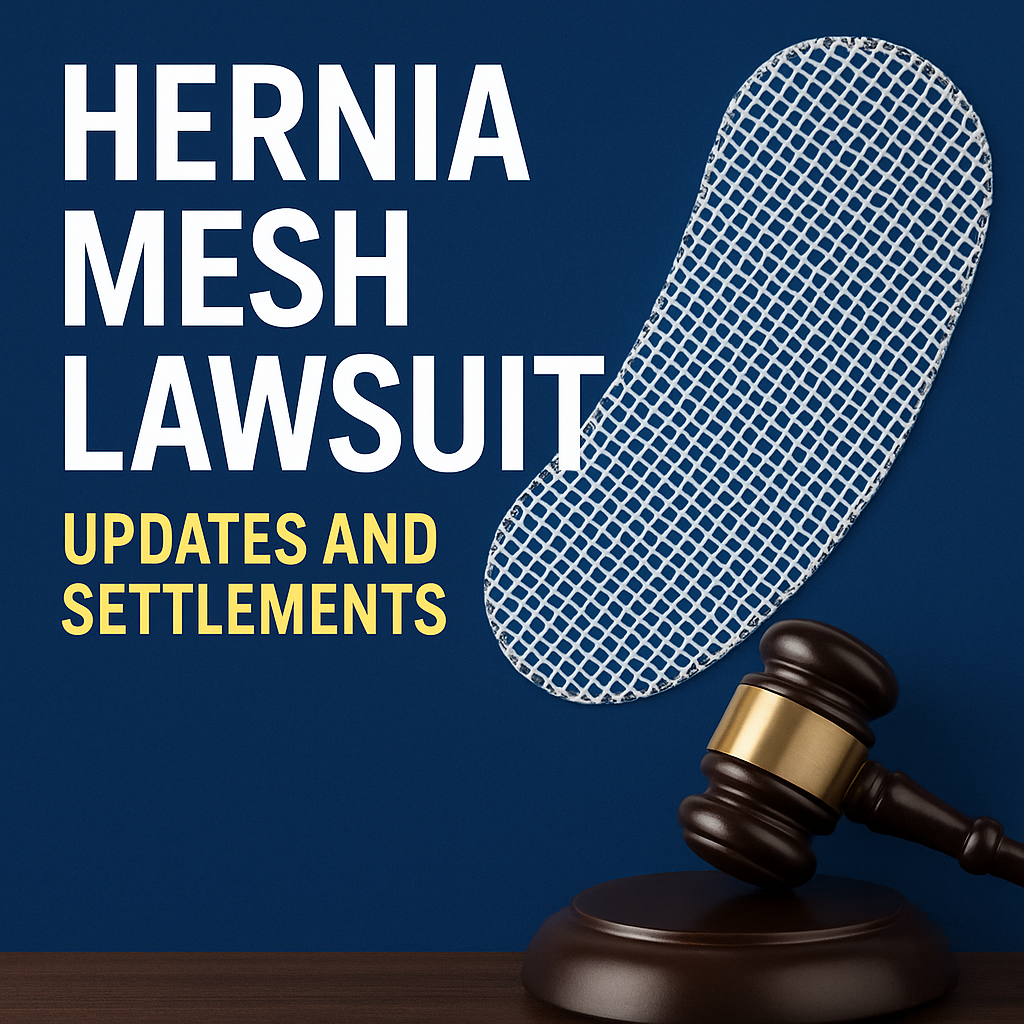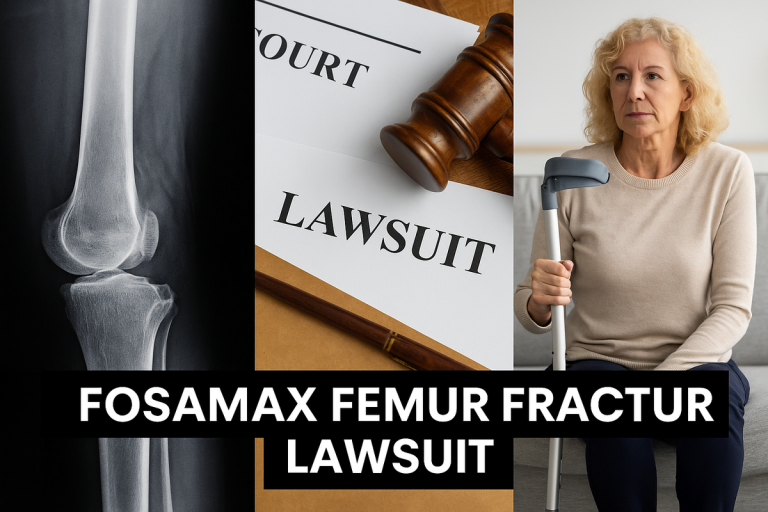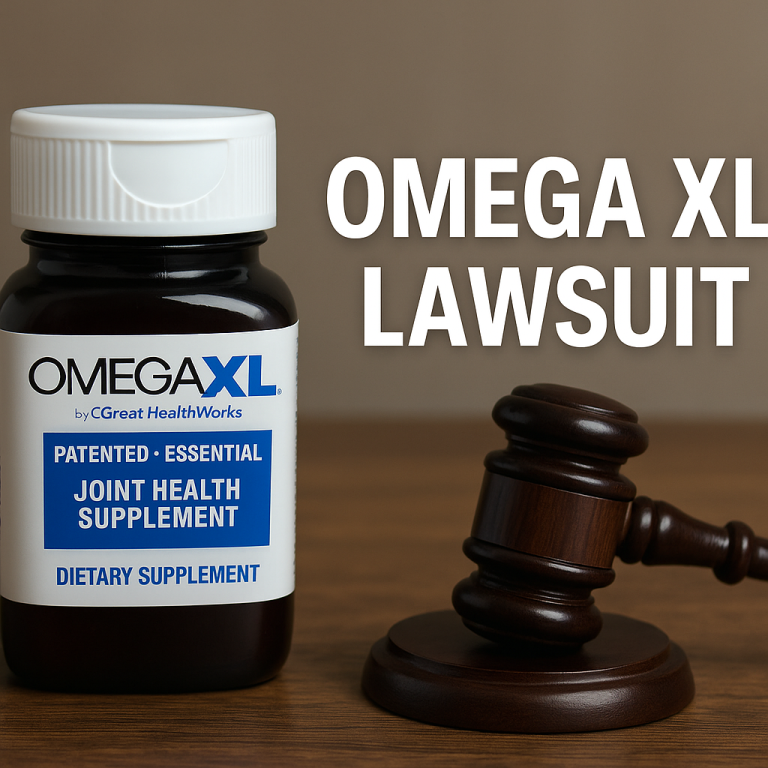The Hernia Mesh Lawsuit is among the biggest medical device lawsuits in the history of the United States. Up to May 2025, it affected over 50,000 victims. The major manufacturers such as Bard, Covidien, Ethicon, and Atrium are being sued. They all stand accused of distributing faulty mesh implants for use in hernia operations.
Patients endured mesh migration, perforation of the organs, and crippling infections. Some needed more than one operation to have the implant removed. Others continue with chronic pain and permanent injury. These cases assert the design of the mesh was defective and the manufacturers did not warn patients. In 2024 and 2025, courts started delivering significant decisions and companies settled with substantial payouts. This article covers every major update using real dates, numbers, and verified data.
What Did Becton Dickinson Settle, and Why Was It So Significant?
On October 2024, Becton Dickinson (BD) also settled approximately 38,000 hernia mesh lawsuits against its subsidiary C.R. Bard. The cases related to products such as 3D Max and PerFix Plug, which in turn were supposed to disintegrate within the body, damaging organs and inflicting infections. The majority of the claims had been consolidated into MDL No. 2846 in Ohio, while a few were litigated in Rhode Island. Although BD never admitted fault, they allocated $1.7 billion toward product liability settlements. A large portion went toward resolving hernia mesh claims.
A Qualified Settlement Fund (QSF) was created to distribute payments. Court-appointed special masters now assess injuries and case files before issuing payments. Many accepted the deal. Others believed the payout undervalued their suffering and opted to proceed independently. In spite of this settlement, Becton Dickinson continues to have more than 24,000 active cases before federal court. Recent complaints, like in a 2025 Virginia case, highlight the controversies that continue. Plaintiffs cite significant injuries such as nerve damage, erosion, and bleeding attributed to Bard’s mesh.
Judges continue to push for case resolution. However, Bard has not admitted wrongdoing, maintaining its products met regulatory standards. Victims and advocates argue the volume of injuries speaks otherwise.
How Are Hernia Mesh Settlements Structured and What Do Victims Receive?
Hernia mesh settlements follow a structured, tier-based compensation model. The system categorizes cases by severity and strength of medical documentation. Quick-Pay Option 1 applies to claimants with minor or undocumented complications. These cases close quickly and offer payments from $2,500 to $15,000. Quick-Pay Option 2 compensates for moderate injuries with confirmed revision surgery or moderate mesh-related pain. These range from $25,000 to $60,000.
Traditional settlement tracks offer higher compensation. These are available to patients who experienced severe injuries—multiple surgeries, infections, or permanent disability. These payouts can range from $70,000 to $1 million depending on case strength. Age, employment history, number of revision surgeries, and quality of life are all evaluated.
In rare group settlements, some awards exceeded $250 million. However, these involved high-profile plaintiffs or large class actions. Most individual cases fall within the lower or mid-tier compensation range. Claimants must provide strong documentation. This includes surgical reports, hospital bills, revision records, and physician evaluations. Each case is reviewed by neutral court-appointed evaluators to determine fair payout.
While the structured process aims for consistency, many victims believe their injuries merit higher compensation. Critics argue that long-term pain and emotional suffering are underrepresented in the financial awards.
Why Does Bard Still Face Over 24,000 Active Cases?
Despite the billion-dollar deal, C.R. Bard faces over 24,000 unresolved claims as of May 2025. Plaintiffs argue the company’s mesh designs were inherently dangerous. Documented issues include nerve damage, mesh erosion, and chronic infections. Recent cases continue to emerge. One Virginia construction worker filed a new suit in 2025, blaming Bard’s 3D Max Mesh for multiple surgeries and permanent pain.
Judges continue to encourage resolution. Court-appointed special masters oversee evaluations to ensure consistent claim handling. Bard maintains its products passed regulatory standards, but the volume of cases challenges that defense.
What Is Covidien Facing in the Upcoming 2026 Trial?
Covidien, now a Medtronic subsidiary, is in trouble. More than 1,800 federal lawsuits are on hold. Plaintiffs allege Covidien’s mesh curled, became hardened, or adhered to internal tissue. The first bellwether trial, Patterson v. Covidien, will start on February 17, 2026, in Boston. Bellwether trials gauge the solidity of evidence and inform subsequent settlements.
Covidien denies wrongdoing. However, a strong verdict could force them into mass payouts. Both sides are preparing rigorously. Covidien’s mesh products, particularly Parietex Composite Mesh, are often cited as defective. Patients report extreme inflammation, abnormal scarring, and mesh disintegration. These failures lead to emergency revisions, prolonged disability, and lasting pain.
The outcome of the 2026 trial could reshape the legal future for all mesh claimants tied to Covidien. If the jury supports the plaintiff, expect quick settlement talks to begin.
Have Ethicon and Atrium Resolved Their Lawsuits?
Ethicon, a division of Johnson & Johnson, once faced thousands of lawsuits over Physiomesh. It was recalled in 2016 due to high complication rates. By 2025, most of these lawsuits have been settled.
Atrium Medical Corporation’s C-QUR Mesh also faced backlash. Its omega-3 coating caused allergic reactions and tissue fusion. Lawsuits were mainly filed in New Hampshire and Georgia.
Both companies have quietly settled most cases. Only isolated lawsuits remain. Legal experts say their litigation exposure is nearly over. Ethicon’s mesh caused severe outcomes like organ perforation, hernia recurrence, and sepsis. Patients often required multiple surgeries, and many could not return to work. Though most claims settled, public trust in Ethicon remains shaken.
Who Qualifies to File a Hernia Mesh Lawsuit in 2025?
You may qualify if:
- Your hernia surgery happened on or after January 1, 2006.
- You received mesh from Bard, Covidien, Ethicon, or Atrium.
- You experienced complications 30+ days post-surgery.
- You required corrective or revision surgery.
- You have supporting medical documentation.
Complications must be confirmed through records. These are CT scans, operating notes, surgery reports, and doctor opinions. The most frequent problems are recurrent hernia, bowel obstruction, infection, or mesh migration. Legal time limits may be relevant based on state. Talk with an attorney immediately.
What Complications Are Common in Hernia Mesh Lawsuits?
Reported complications include:
- Chronic abdominal pain
- Infection and abscess
- Mesh migration or shrinkage
- Bowel obstruction
- Hernia recurrence
- Seromas or fluid buildup
- Organ perforation
These injuries often lead to secondary surgeries. Some patients undergo mesh removal and tissue reconstruction. These procedures are invasive, dangerous, and costly. Scarring, sexual dysfunction, digestive issues, and permanent disability are other long-term effects. Numerous victims experience psychological trauma and diminishing the quality of life.
Is the Hernia Mesh Lawsuit Still Ongoing?
Yes. Thousands of Bard claims remain unresolved. Covidien’s bellwether trial could lead to a new wave of settlements. Ethicon and Atrium are nearing the end of their litigation cycles.
As of mid-2025, new cases continue to be filed. Courts are still consolidating claims in MDL formats for faster processing. Victims are urged to file before deadlines close their eligibility. Lawyers emphasize urgency. Evidence degrades over time, and compensation windows may shrink. The longer claimants wait, the harder it becomes to secure justice.
Conclusion: What Should Victims Know in 2025?
The Hernia Mesh Lawsuit is still one of the most dramatic legal cases in U.S. history of faulty medical implants. Despite years of litigation and settlements worth more than $1 billion, thousands of victims still have not received their day in court. They endure chronic pain, disability, and financial loss—alleged all because a device was said to be safe.
As of 2025, Bard continues to have more than 24,000 pending claims. Covidien is on the verge of a pivotal bellwether trial that will change the course of negotiations and future settlements. Ethicon and Atrium have resolved most of their cases, but their reputations and patient trust remain deeply affected.
For prospective claimants, knowing what the eligibility is important. Any individual who had hernia mesh surgery after 2006 and then experienced complications can have a valid claim. Records of operative reports, revision surgeries, and recorded symptoms will be central to establishing damages and obtaining appropriate compensation.
Time is a critical factor. Statutes of limitations vary by state and can impact claim eligibility. Waiting too long can result in missed opportunities for justice. Therefore, individuals experiencing symptoms should consult an experienced attorney without delay. This litigation is not only about compensation—it is about corporate accountability. Many victims feel ignored by manufacturers who placed profit above patient safety. The Hernia Mesh Lawsuit provides a platform for those voices to be heard.
Justice takes its time, but it is underway. Courts, lawyers, and advocates keep up the struggle for transparency and recompense. The next few months—particularly after the 2026 trial at Covidien—will be crucial. In the meantime, victims need to stay informed, engaged, and represented by the law. The struggle is far from over, but the road ahead is brighter than ever.
FAQs about Hernia Mesh Lawsuit
What is the typical settlement amount for a hernia mesh settlement?
Typical settlements range depending on the severity of injury. Low claims can settle for $2,500 to $25,000. Intermediate cases with revision procedures can get between $25,000 and $60,000. Serious cases with disability or permanent injury can be eligible for settlements between $70,000 and $1 million.
Are new hernia mesh lawsuits still being filed in 2025?
Yes. Courts continue to accept new cases. Victims who are developing complications need to move quickly. Statutes of limitations exist, and each state has varying deadlines.
Which mesh brands are most frequently litigated?
The majority of lawsuits are against mesh produced by C.R. Bard, Covidien, Ethicon (a subsidiary of Johnson & Johnson), and Atrium. Devices such as Physiomesh, 3D Max, PerFix Plug, Parietex Composite Mesh, and C-QUR are most commonly mentioned.
What kind of evidence is required to substantiate a hernia mesh claim?
The claimants are required to produce surgical reports, medical scans, hospital discharge reports, and evidence of revision surgery. Adequate documentation provides an increased possibility of being eligible for greater compensation.
How long will it take to get a settlement?
Settlement time frames differ. Expedited options might settle in months. Standard settlement reviews can take over a year. The intricacy of the injury and documentation filed influence resolution speed.




